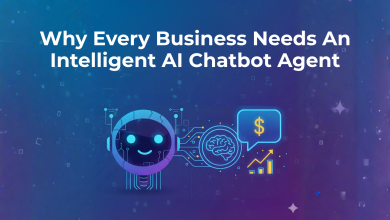
The convergence of cloud computing and voice AI has reached a tipping point, fundamentally transforming how enterprises and consumers interact with technology.
The era of simple voice commands is over. In 2025, cloud-based voice AI has evolved into something far more powerful: intelligent, context-aware agents that don’t just respond to queries they anticipate needs, maintain conversations across devices, and execute complex workflows in real-time. This isn’t just an incremental improvement; it’s a complete paradigm shift that’s reshaping every industry from healthcare to finance.
The Death of Static Voice Assistants
Traditional voice assistants were glorified search engines with speech recognition. Today’s cloud voice AI represents a quantum leap forward. These systems leverage massive language models hosted on distributed cloud infrastructure to deliver millisecond-level responses that feel genuinely conversational.
The breakthrough lies in real-time cloud inference. By processing voice interactions through powerful cloud GPUs rather than limited local hardware, these systems can access vast knowledge bases, maintain persistent memory across interactions, and provide contextually rich responses that adapt to individual users over time.
Consider this: a user can start a complex research task on their smart speaker in the morning, continue it through their car’s voice system during commute, and complete it on their phone at the office with the AI maintaining full context throughout. This seamless cross-device synchronization, powered by cloud infrastructure, represents the new standard for voice interaction.
Infrastructure as the Invisible Enabler
Behind every smooth voice interaction lies a sophisticated network architecture that most users never see. Cloud providers have built extensive regional data centers specifically to host voice models closer to users, reducing latency to under 200 milliseconds the threshold for natural conversation flow.
The magic happens through edge-cloud collaboration. Simple commands are processed locally for privacy and speed, while complex reasoning tasks leverage the full power of cloud computing. Dynamic load balancing ensures that whether you’re one of ten users or ten million, the response quality remains consistent.
This infrastructure automatically scales during peak demand periods—think product launches, emergency situations, or major news events when voice query volume spikes dramatically. The elastic nature of cloud computing makes this possible without the massive upfront hardware investments that would have been required just five years ago.
Industry Transformation in Real-Time
The impact extends far beyond consumer convenience. In healthcare, cloud voice agents are revolutionizing patient care by documenting consultations in real-time, accessing medical records securely, and supporting telemedicine sessions with unprecedented accuracy. Doctors can focus on patients while AI handles documentation and data retrieval.
Financial services have embraced cloud voice for fraud detection and personalized advisory services. These systems can process thousands of concurrent calls, analyzing voice patterns for security threats while providing customized financial guidance all while maintaining strict compliance with regulatory requirements.
Retail environments now feature multilingual voice kiosks that provide instant product information, check inventory across multiple locations, and even process returns through natural conversation. The cloud infrastructure ensures these systems stay updated with real-time inventory data and can handle multiple languages simultaneously.
The Network Foundation
None of this would be possible without revolutionary advances in network technology. 5G and emerging 6G networks provide the ultra-low latency and high bandwidth necessary for real-time cloud voice processing on mobile devices. Users expect the same quality whether they’re in their office or traveling internationally.
Enterprise deployments rely heavily on software-defined WANs (SD-WAN) to prioritize voice traffic and ensure consistent call quality across distributed offices. These intelligent networks can route voice packets through the optimal path to cloud servers, automatically adjusting for network congestion or outages.
Perhaps most importantly, AI-driven traffic optimization ensures that voice data takes the fastest, most stable route to processing centers. The network itself has become intelligent, learning from usage patterns to predict and prevent performance issues before users notice them.
Security Without Compromise
The sensitivity of voice data demands unprecedented security measures. Modern cloud voice platforms implement end-to-end encryption for all data in transit and at rest, ensuring that conversations remain private even as they traverse global networks.
Zero-trust architecture governs access to voice APIs and data, with continuous verification and role-based permissions that adapt based on user behavior and risk assessment. This isn’t just about preventing breaches it’s about building systems that can prove their security to regulators and users alike.
Advanced techniques like federated learning and differential privacy allow these systems to improve over time without compromising individual privacy. Models can be trained on collective usage patterns without any single conversation being exposed or stored unnecessarily.
The Ecosystem Revolution
Perhaps the most significant development is the emergence of truly interoperable voice ecosystems. Cloud providers now offer comprehensive APIs that allow developers to embed sophisticated voice capabilities into any application or device without building from scratch.
This has enabled multi-agent collaboration, where voice assistants from different vendors can work together seamlessly. A user might start a task with one company’s voice agent and complete it through another’s system, with full context preservation throughout.
Unified data lakes aggregate voice interactions with other behavioral data to create increasingly sophisticated user models. This isn’t about surveillance it’s about creating AI systems that truly understand context and can provide genuinely helpful assistance rather than generic responses.
The Voice-First Future Is Now
Looking ahead, cloud voice technology is positioning itself as the primary interface layer for digital interaction. Ambient voice environments are already being deployed in offices, hospitals, and public spaces where natural conversation with AI becomes as common as using a keyboard.
The most transformative aspect is the shift from voice as a user interface to voice as an API gateway. Instead of navigating complex software interfaces, users will simply describe what they want to accomplish, and intelligent cloud agents will orchestrate the necessary digital services behind the scenes.
We’re moving toward true AI collaboration, where humans work alongside intelligent cloud voice agents that can plan, synthesize information, and execute complex tasks through natural language conversation. This isn’t science fiction it’s the logical evolution of current capabilities.
The Bottom Line
Cloud voice AI in 2025 isn’t just another technology upgrade—it’s a fundamental shift in how humans interact with digital systems. Powered by advanced language models, real-time cloud processing, and intelligent network infrastructure, these systems are eliminating the friction between human intent and digital execution.
For enterprises, this means more efficient workflows, better customer experiences, and new possibilities for service delivery. For consumers, it means technology that finally feels intuitive and helpful rather than frustrating and limiting.
The voice-first future isn’t coming—it’s here. And it’s being built in the cloud, one conversation at a time. Companies that recognize this shift and adapt their strategies accordingly will lead the next phase of digital transformation. Those that don’t risk being left behind in an increasingly voice-driven world.




